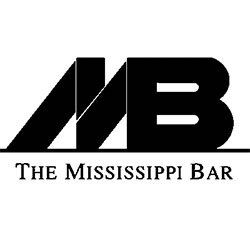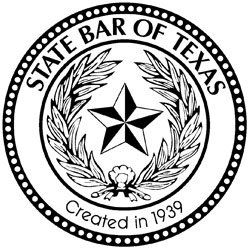Injured?
I Just Got Hit!
You have just been in a car accident. What do you do? This will depend on the seriousness of the injury. If any person has sustained injuries then 911 should be call immediately. If no one is hurt then you should call the local police department to make a report. You should then exchange information with all driver(s) involved. The information you should obtain is the complete name of the driver, address, phone number, description of the vehicle to include the license plate; make and model; and insurance information. This would also include obtaining the name, address and phone number for any witness(es) to the accident. Some people over look obtaining this information because they assume it will be a part of the police report; however, police do not generally create their official report at the scene.
Prior to and upon law enforcement arriving be very mindful of what you say at the scene of the accident. It is the officer’s job to investigate the accident to figure out who caused the accident and what happened. The officer will decide who was at fault based upon the information gathered at the scene and issue a citation to the at-fault driver and put this into their report. So, for example, if you say “I am sorry I ran that red light is everyone okay?” to the other driver or passengers in the vehicle they may let the officer know that you admitted fault and relay to the officer what you said. Furthermore, if a witness heard you say the same thing and they are interviewed by the police they too may repeat what they heard you say to the officer; therefore, do not under any circumstance admit fault.
Furthermore, it is important to know that police officers will not provide you with a police report. They use a worksheet to obtain the information needed to complete the report and then later write up the official report. However, the officer will give you an incident number and provide you with a certain time frame when you can request a copy of the official report with that incident number provided to you. This report will be relied upon in trying to settle your case.
Insurance adjusters look at the police report with great consideration. Adjuster generally accept the report as the most accurate assessment of the accident because for the most part the officer was there. In the event the adjuster disagrees with the police report and your case goes to trial, there is a strong chance the officer’s testimony to their report and who they determined at fault would carry great weight with the jury.
Additionally, while at the scene of the accident take photos of your vehicle, other vehicles involved and the area around the accident. Also, take photos of any visible physical injuries. If the accident is severe and you are not able to take photos immediately take the photos once you have been treated and in stable condition. These photos may be used at trial or sent to the adjuster as part of your demand package when mailed to the insurance company.
My neck and my back
After you have been in an accident it is important to get medical treatment right away. It is not uncommon for accident victims to leave the scene of the accident feeling that they were uninjured and wake up the next day or two with extreme soreness, tightness or muscle spasms. In these instances, immediate medical attention should be sought from your doctor. You may wonder why it is important to seek treatment immediately? The answer is it provides documentation in establishing a connection between the accident and your injury.
Documentation is important because one of the things insurance adjusters will do is review your medical records with a fine-tooth comb. If they see treatment in close proximity of the accident, it lends a great deal of credibility to your claim you were injured. Remember medical records and clear treatment paths are essential to successfully pursuing your personal injury claim.
If an injury has been diagnosed by your physician, it’s critical that you keep your appointments and attend your scheduled treatments. Delays in receiving treatment, large gaps in treatment or skipping doctor’s appointments gives the insurance company an argument that suggests your injuries aren’t severe or legitimate. Even though there are explainable and legitimate reasons for the delay or gap in treatment many insurance adjusters will refuse to pay claims and will often argue, “Well, you must not have been that hurt because you didn’t go right to the doctor, and therefore we’re going to deny your injury claim.” Or if they do not deny your claim they will offer settlements that under compensate your injury. Know this tactic is very common and insurers often get away with it.
Sometimes people delay treatment because they are expecting the at-fault driver to pay for their medical bills and they do not want to use their insurance. Even if the other driver is at-fault and therefore their insurance is responsible for your medical bills, you still need to get treatment using your own health insurance for the time being. Once you have fully recovered and you are finished treating or reach maximum medical capacity, you will send your medical bills to the at-fault driver’s insurance company and request reimbursement. That is how the claims process works – they are not going to pay you up front anyway, so there is no reason to delay seeking treatment.
Deal or no deal
Once you have attended all scheduled treatment and have been released from the doctor a demand packet is put together to send to the at -driver’s insurance company. A demand letter is usually sent by an injured person, typically through your attorney, to the insurance company of the person or business responsible for causing the injury. Having a well-organized and convincing demand letter increases your chances of getting a high personal injury settlement. A strong letter of demand shows the insurance company you are knowledgeable about how the claims process works and you understand how much your settlement is worth. A demand letter is generally not sent until all treatment has been complete. Your demand packet will include a collection of all of your bills; medical records, which relate to your injuries, lost wages; police reports; photographs; video and anything additional that would be pertinent to your claim for damages.
Once the insurance company receives the demand package from the attorney, there are one of three options that generally happen. First the adjuster can deny the claim. If the insurance company is not willing to negotiate or does not feel they are responsible for paying out on your claim then a lawsuit will need to be filed immediately.
The second option that could happen is the insurance company can accept your demand. This is very rare. The third option is the insurance company can make a counter offer. This is what generally occurs once the demand packet has been received. It is at this point that your attorney will work with the adjuster to get your claim resolved. Insurance companies are reluctant to pay you the full amount of compensation. They generally offer low settlements in the hopes that you accept less money more quickly than wait and go through the process of negotiation or even litigation.
No deal
If your claim is not worked out with the insurance company, then the next step in your claim would be to file a lawsuit. Many people wonder how long litigation last and there is no definite answer to that question. Each person’s claim is different and depending on your injuries and if there are multiple parties involved some claims can resolved quicker than others.








